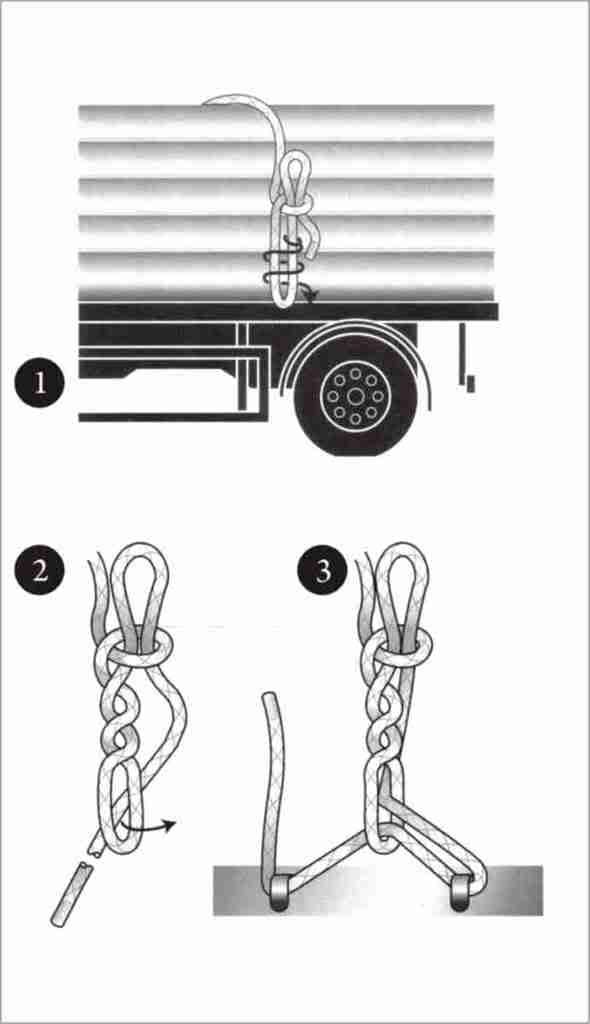Diamond Hitch
Aplications : This hitch secures loads to pack animals or to off-road and other vehicles. (See also trucker's hitch.)
Method : Pass a continuous line around six anchorage points (1-3).The characteristic feature of this hitch is the twisted middle parts, which allow the slack to be taken up where necessary as the load shifts and strains.

History : The diamond hitch was used by nineteenth‑century North American wilderness trekkers and prospectors, amongst others.
Aplications : This hitch secures loads to pack animals or to off-road and other vehicles. (See also trucker's hitch.)
Method : Pass a continuous line around six anchorage points (1-3).The characteristic feature of this hitch is the twisted middle parts, which allow the slack to be taken up where necessary as the load shifts and strains.

History : The diamond hitch was used by nineteenth‑century North American wilderness trekkers and prospectors, amongst others.




